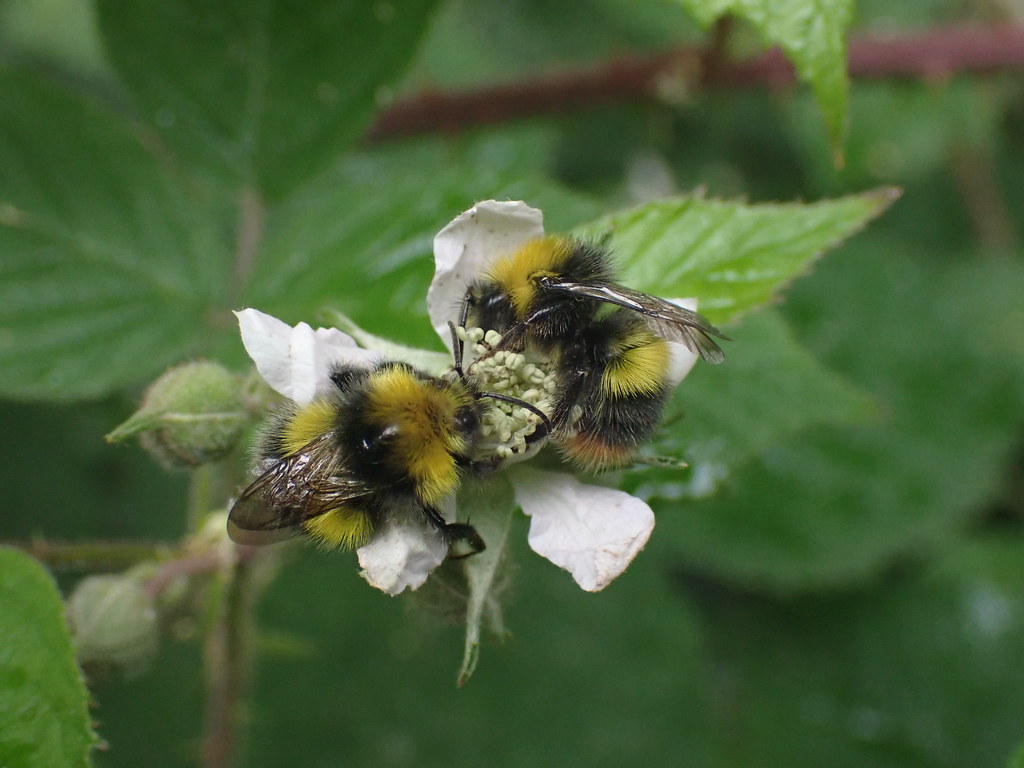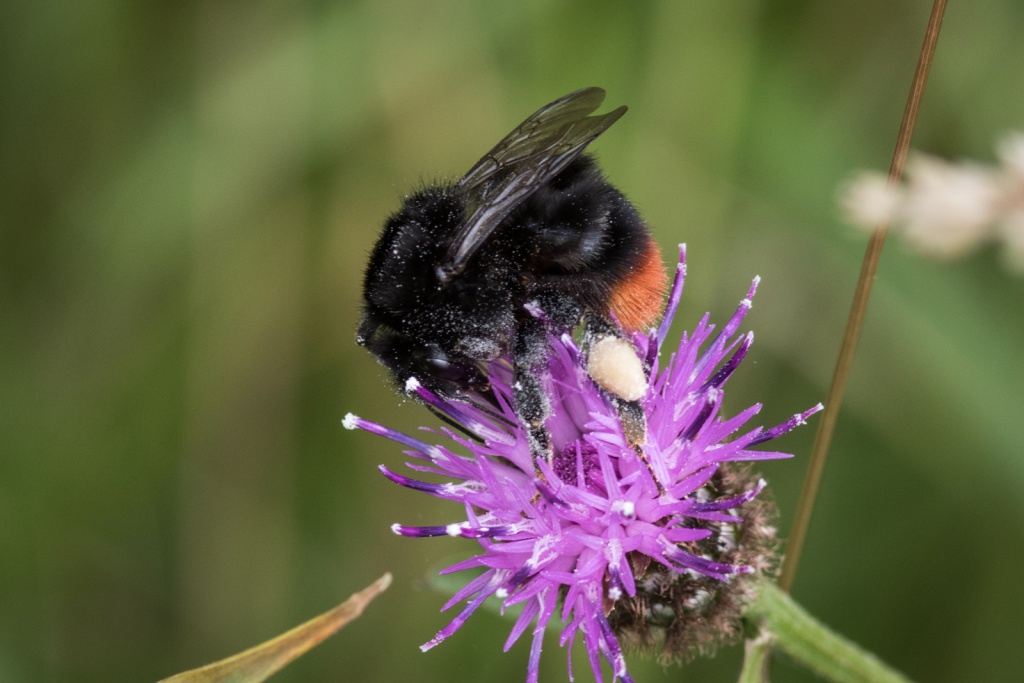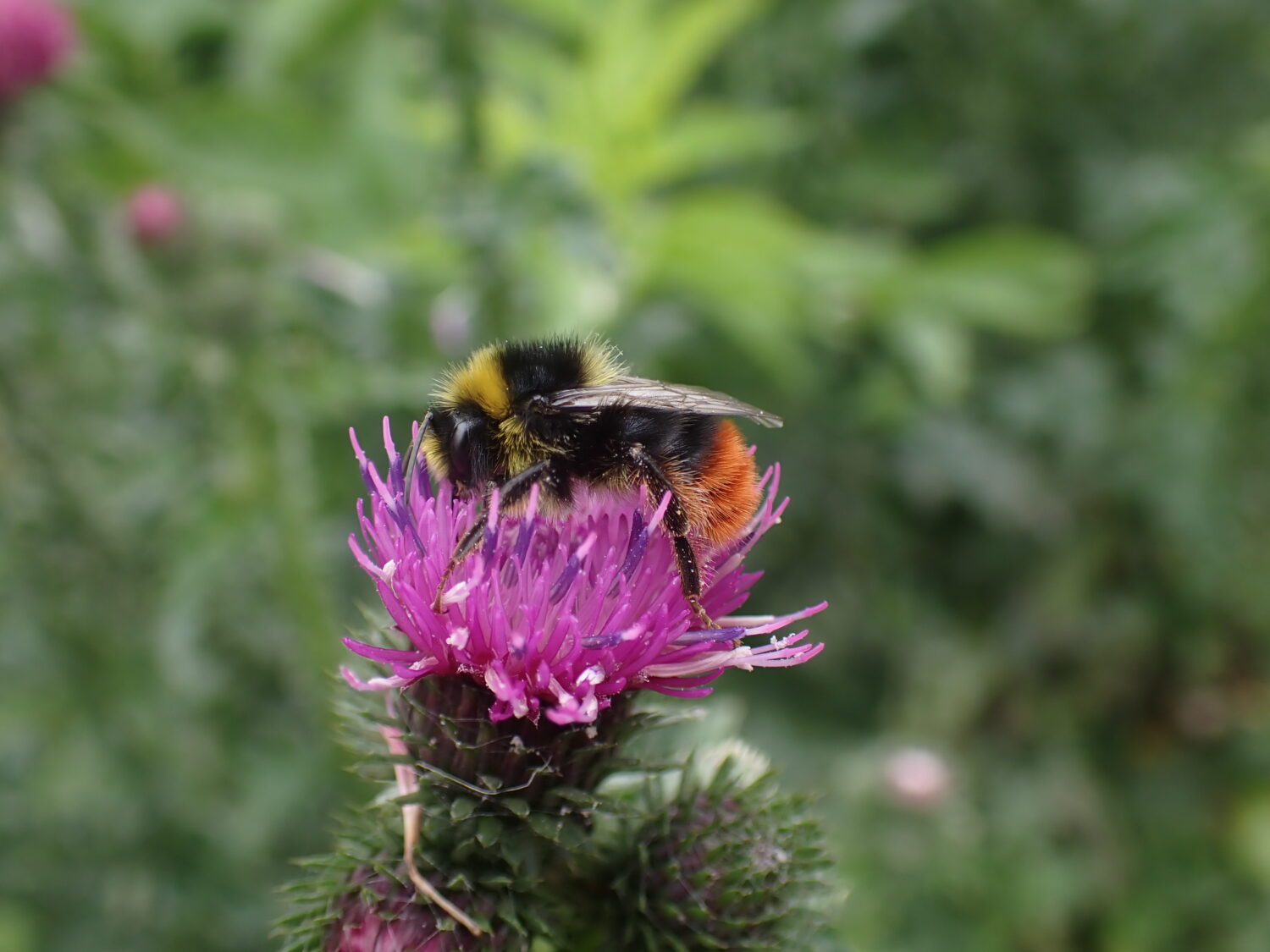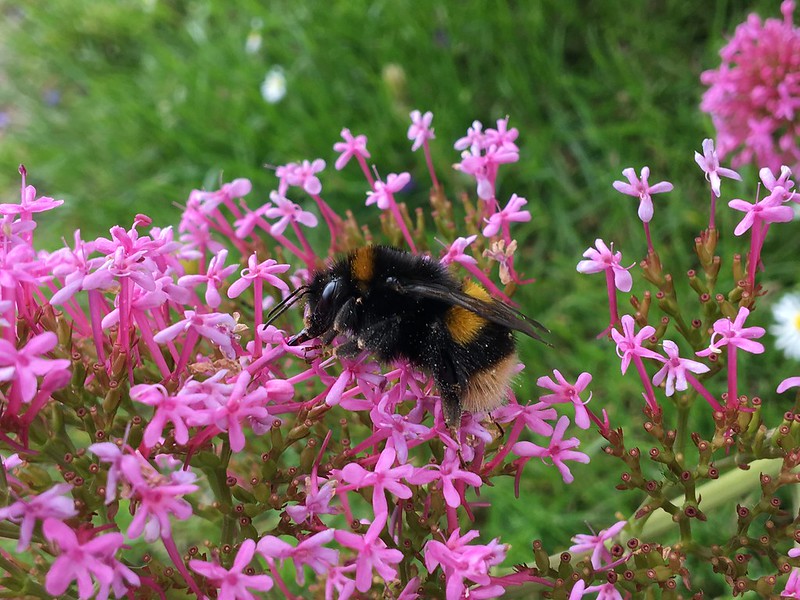The smallest British bumblebee, the Early Bumblebee is out early in the year and commonly found in gardens.
Fast facts
- Common name
- Early Bumblebee
- Scientific name
- Bombus pratorum
- Bee group
- A species of bumblebee
- When to see it
- February – August
Description
A small bumblebee, the Early Bumblebee has a small orange-red tail and two yellow bands. As its name suggests, the Early Bumblebee is on the wing early in spring, but also finishes its nest lifecycle in as early as June.
Identification

Queens
Early Bumblebees have the smallest queens compared to other British species.
The tail is small and orange-red. Queens also have two broad lemon-yellow bands, one behind the head and one across the abdomen.

Workers
Workers are essentially small versions of the queen. However, the yellow abdomen band is often reduced or absent completely. The small orange-red tail can also be reduced and looks absent from some angles.
Workers, especially early in the nest lifecycle, are small bumblebees.

Males
Like females, males have a orange-red tail. Compared to queens and workers, males are more extensively yellow, with broad bands behind the head and across the abdomen.
Males also have yellow facial hair unlike queens and workers. As they do not return to the nest, males are also fluffier in appearance.
As Early Bumblebee nests finish early in the year, you can see males on the wing in as early as June.
Similar species
Red-tailed Bumblebee
Queen and worker Red-tailed Bumblebees do not have yellow bands. Male Red-tailed Bumblebees are less extensively yellow and more elongate than Early Bumblebee males.
Buff-tailed Bumblebee
Queens of the Buff-tailed Bumblebee are larger, with darker yellow bands and an off-white or tawny tail.
Ecology
An underground nester, you’ll find this bumblebee nesting in old rodent burrows. Nests are small at no more than 100 workers. Due to the early season nature of this species, this bumblebee may have two generations a year, particularly in the south.
With a short tongue, you can find this species ‘nectar robbing’ from tubular flowers such as Comfrey. Their tongues are too short to access the nectar in a normal fashion, so instead pierce a hole near the base of the flower.

Male Early Bumblebee ‘nectar robbing’ from Comfrey © Charlotte Rankin
Regional distribution
Regionally, the Early Bumblebee is a widespread and common bumblebee. It is one of the most common bumblebees in Britain.

Spotted this bee?
Share your sighting to the North East Bee Hunt and contribute to the conservation and study of our region’s bees.


